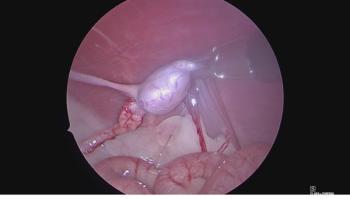
Implementing a geriatric wellness program (Proceedings)
A geriatric wellness exam will not be one size fits all, it tends to be a dynamic process whereby additional testing is added on depending on the findings of the physical examination. There are however certain building blocks that are vital.
A geriatric wellness exam will not be one size fits all, it tends to be a dynamic process whereby additional testing is added on depending on the findings of the physical examination. There are however certain building blocks that are vital.
One of the major goals of a wellness program has to be education. Education is also what will drive compliance with a program. The owners should have the benefits of a senior/geriatric program explained to them by the front office staff. Brochures can be beneficial for additional information. Given how common problems are in geriatric pets (metabolic diseases, obesity, DJD, heart disease) it will be rare that a patient will be found to be free of problems. It is vital that the owner be provided information on these problems and how best to deal with them.
Physical examination and history: a good history and physical examination go a long way toward identifying any abnormalities present in a pet. Important components of a physical include
1. Assess BCS: Obesity is a widespread problem. It has been shown that owners are poor judges of the body condition of their pet. It is important for veterinarians to inform owners about whether their pet is overweight or not. Obesity can directly cause certain diseases such as diabetes or elevated blood pressure. It can also be a significant factor in complicating the management of other disorders.
2. Ocular exam; check for exterior and interior segment changes. A retinal exam is recommended in all geriatric patients. The eyes can be one of the first places where the effects of hypertension can be seen. Using a 28 or 30D lens facilitates this by allowing exams without dilation in most instances.
3. Thorough oral examination. Dental disease is common in dogs and cats, we recently found 75% of patients presented for routine visits had periodontal disease.
4. Careful neck palpation in cats: Even in cats with normal T4 values, a thyroid slip may be detected. The clinical implication of this finding is unclear at this time, but does warrant that the owner be educated on the signs of hyperthyroidism as well as an earlier recheck to assess T4 values again.
5. Auscultation: murmurs are common in older dogs and may or may not be clinically significant. If found, additional questions regarding exercise tolerance, cough and general health are indicated. Since stress tends to emphasize murmurs, especially in cats with dynamic outflow tract obstruction you might want to consider making auscultation one of the first parts of the physical examination.
6. Abdominal palpation: Palpate carefully for tumors, hepatomegaly or small kidneys.
7. Check for skin masses.
Lab testing:
Minimally a CBC, chemistry panel and UA should be obtained. Urinalysis is underutilized and can provide important information. Proteinuria is a major concern and may be the only indication that glomerulonephritis is present. Additional testing could be considered such as T4 in older cats as routine test. In dogs, it is questionable that a routine T4 is helpful unless the patient has signs that would suggest hypothyroidism. Fecal exam could be considered, though in most cases money is better spent on prophylactic deworming. Testing for heart disease (NT-proBNP) with blood tests as a screening tool is not advisable except in high risk patients where occult disease is possible (Doberman for instance, or cats).
ECG:
ECGs are easy to obtain and geriatric patients are more likely to have problems. The clinical usefulness of this has not been evaluated.
Blood pressure:
The main concern with routine screening blood pressure determination is that white coat hypertension is common and most elevated results will be falsely elevated. Certainly in older cats blood pressure should be measured routinely, even if a disease causing hypertension is not present since cats can develop severe hypertension idiopathically.
Imaging:
The clinical usefulness of routine imaging is uncertain. Imaging is certainly recommended in those patients that have health issues, especially with regard to heart or respiratory problems.
Newsletter
From exam room tips to practice management insights, get trusted veterinary news delivered straight to your inbox—subscribe to dvm360.




